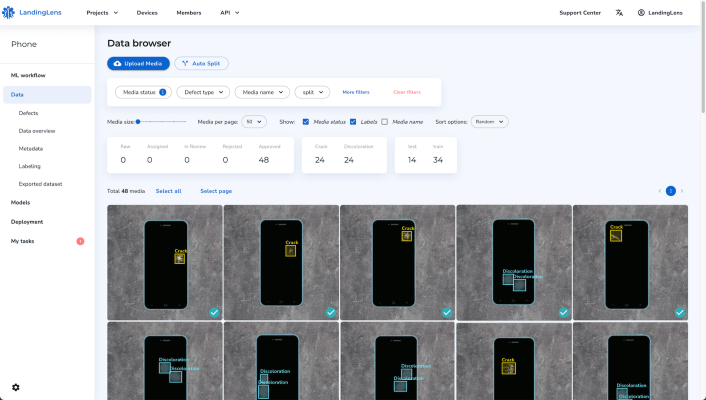Just over a year after launching its flagship product, Landing AI secured a $57 million round of Series A funding to continue building tools that enable manufacturers to more easily and quickly build and deploy artificial intelligence systems.
The company, started by former Google and Baidu AI guru Andrew Ng, developed LandingLens, a visual inspection tool that applies AI and deep learning to find product defects faster and more accurately.
Ng says industries should adopt a data-centric approach to building AI, which provides a more efficient way for manufacturers to teach an AI model what to do, using no code/low code capabilities, which include just a few mouse clicks to build advanced AI models in less than a day.
“We kicked off the data-centric AI movement and are quite pleased that other companies have started talking about it,” he told TechCrunch. “In manufacturing, every factory does something different, so the problem becomes how we can help 10,000 manufacturers build 10,000 different models without having to hire a lot of manpower.”

Andrew Ng, founder and CEO. Image Credits: Landing AI
AI is expected to create $13 trillion of realized value to the world’s economy by 2030, according to a McKinsey study. Ng says not much of that is realized yet, as it remains challenging to build different AI models.
He believes Landing AI has cracked the code for building these models, and raised the Series A round after seeing product market fit and wanted to be able to scale the team to make the product better.
McRock Capital, an investment firm focused on the industrial Internet of Things, led the investment and was joined by Insight Partners, Taiwania Capital, Canadian Pension Plan Investment Board (CPP Investments), Intel Capital, Samsung Catalyst Fund, Far Eastern Group’s DRIVE Catalyst, Walsin Lihwa and AI Fund.
Landing AI has made strides in building its product, but Ng said the company is still in the early stages of the data-centric AI movement and wants to make additional progress and innovate on some technology that is still missing.
For example, while previously building a speech recognition system with 350 million data points, he found that AI technology invented for that many data points does not work as well in manufacturing settings with limited images to find defects. Part of the data-centric movement is to develop tools to help domain experts by utilizing less than 50 images to provide a clearer example of what is a defect.
“We’ve reached a point where it is working and we are eager to scale everything,” Ng said. “We’ve been fascinated for years on how to crack the recipe and take AI to other industries, and we are finally getting there with data-centric AI.”
